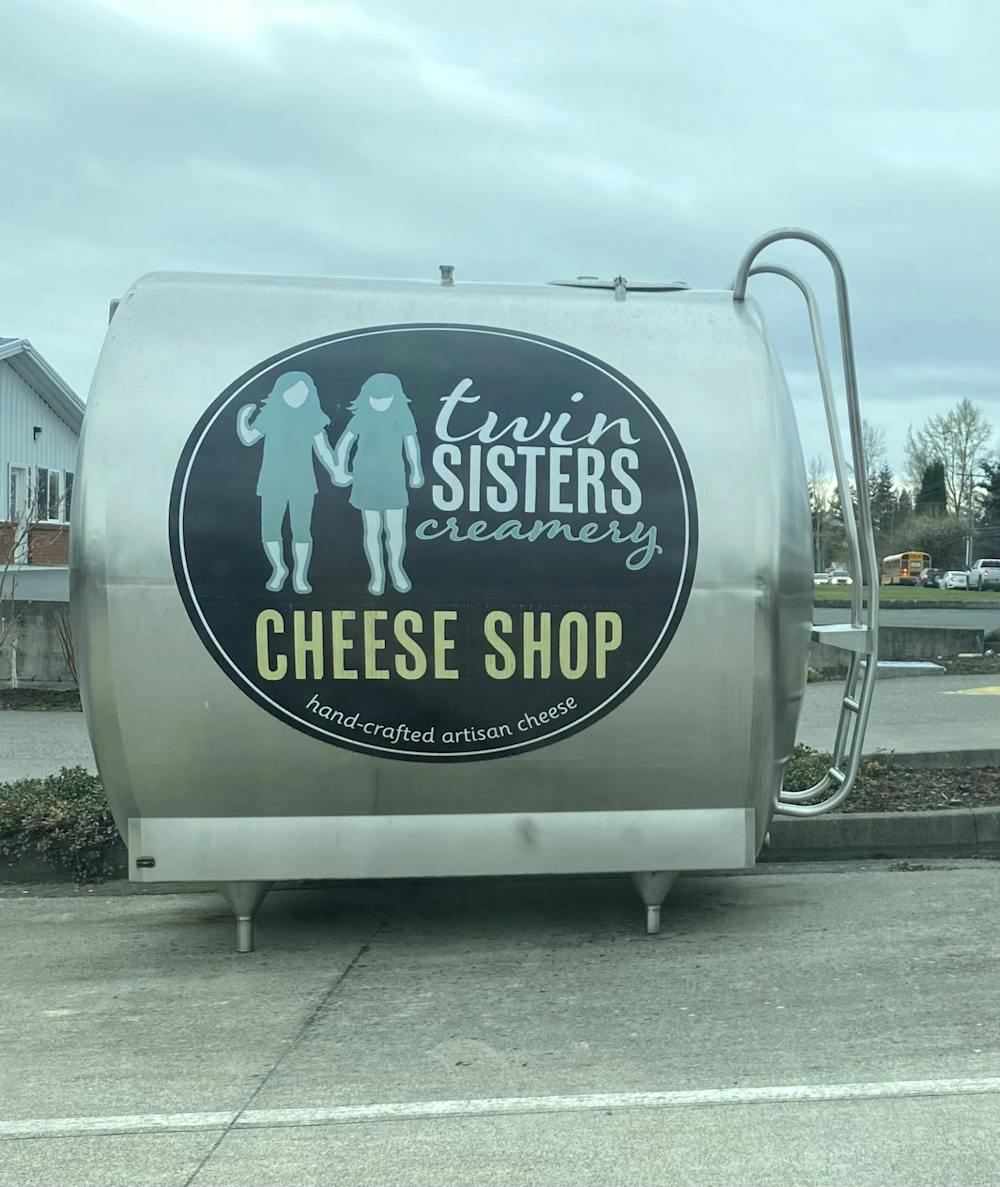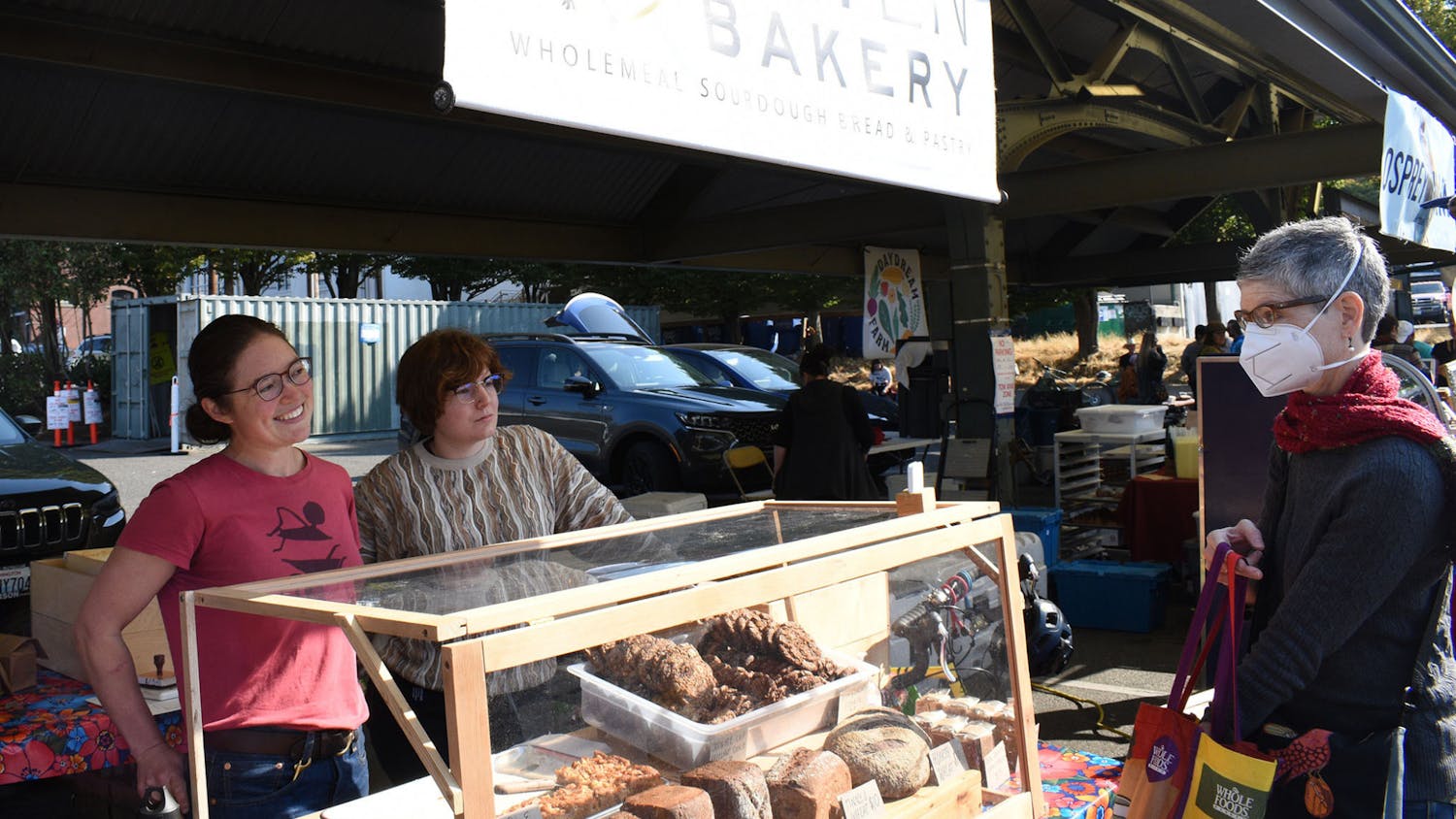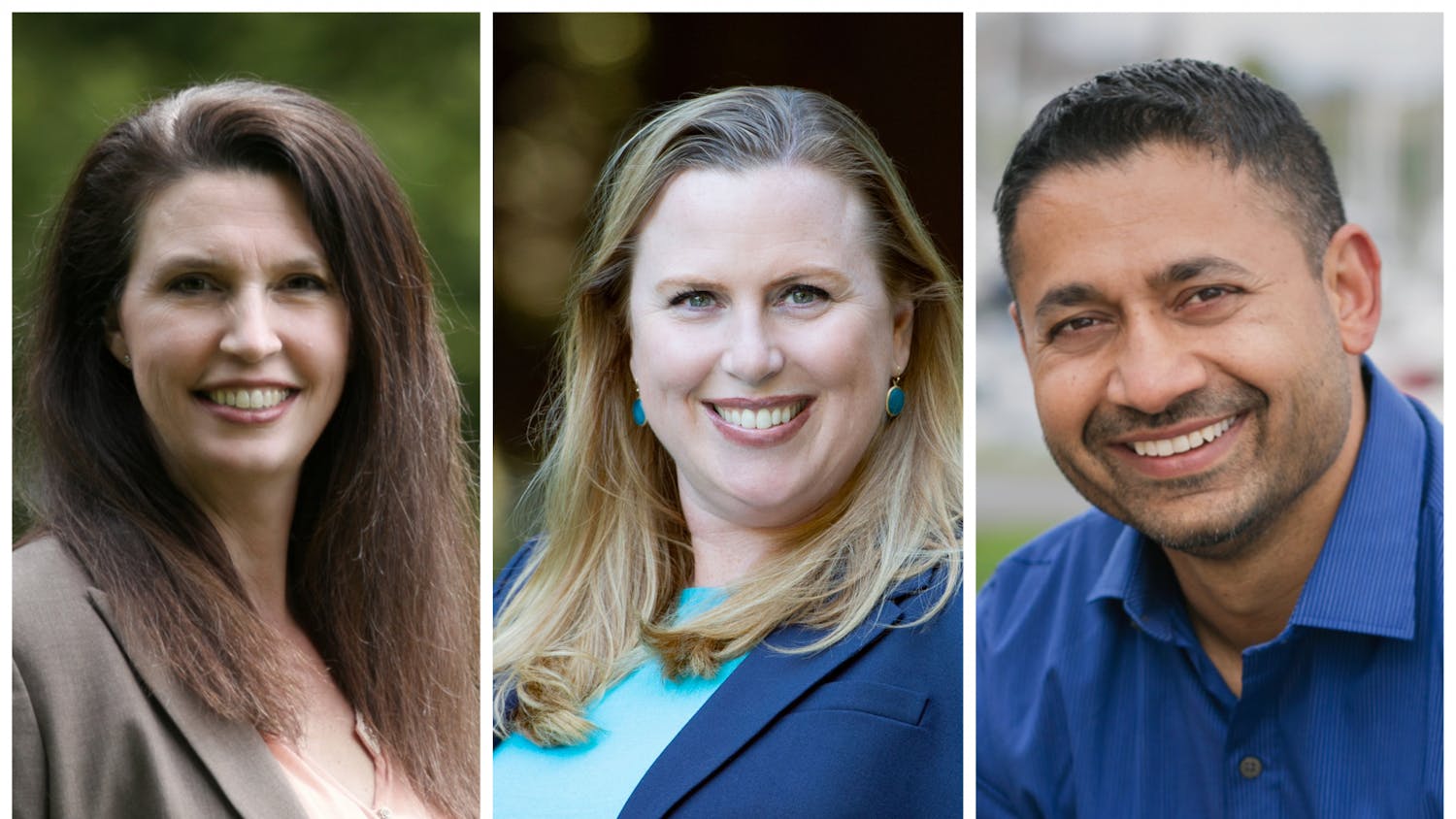There are dozens of silos on the short drive to transport milk from Twin Brook dairy cows to the artisan cheese producers at Twin Sisters Creamery. Grassy fields roll by, and seven, eight, nine vertical stacks are visible on Ferndale's horizon all at once.
Approaching the freeway, locally-owned shops begin to dot Portal Way. On the driver’s side, Twin Sisters Creamery, a farm-style building with a paint job reminiscent of their specialty blue cheese.
Outside, a bench with "welcome" carved into its back invites you through the door of Lindsay and Jeff Slevins' creamery and storefront.
The husband and wife co-owners combined their skills in 2013 to start their dream business revolving around Lindsay's love and expertise of all things cheese and Jeff's manufacturing background. With their twin girls as inspiration for the name and logo, the family business, turning eight in August, is an established part of the community.
Life of the cheesemakers
The creamery's line of raw-milk cheeses includes Whatcom Blue, Lindsay's favorite, a cheese made with mustard seed, one with peppercorn and the classic Farmhouse. Their products are featured in pamphlets and restaurants on a local and state level through the power of partnership.
Twin Sisters Creamery is one of over 50 proud members of the Washington State Cheesemakers Association, an organization where educational resources and grant-finding tools are made available to members.
Despite a love for cooperation, the daily workload keeps the Slevins close to their work rather than engaging with other Whatcom producers and consumers as much as they'd like.
"We don't get out of the creamery much. … We do all the production ourselves, and labor and training and everything is hard to find, so we're here doing it," Lindsay said. "We count on our relationships with the chefs that use our product, and the stores that carry it and their campaigns."
The Slevins have found a model that works for them — but it isn't without challenges.
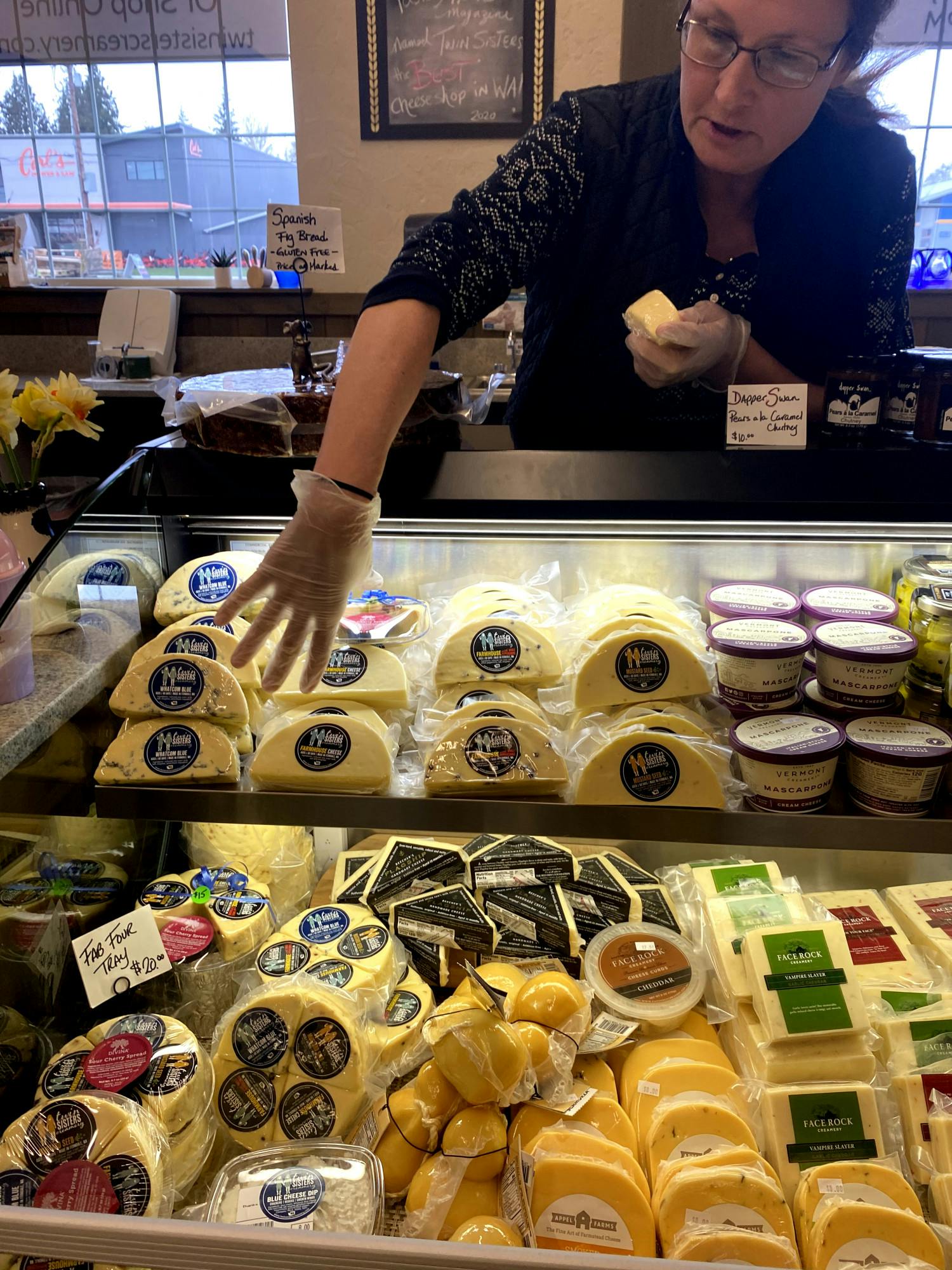
Twin Sisters Creamery co-owner Lindsay Slevin shows off the local cheese case, front and center of the storefront. Twin Sisters places their own cheese varieties next to other local producers, highlighting community over competition. // Photo by Madisun Tobisch
Lindsay said producers in the county know what they're doing and many have been doing it for a long time. Even still, she said the opportunity for connection and outreach to more consumers would benefit the entire food system.
That's where self-proclaimed government policy nerd Riley Sweeney comes in.
Slice of the system
Sweeney works for the City of Ferndale and is chair of Whatcom County's Food System Committee. He helped continue the long line of work started in 2007 by the Washington State University Whatcom Extension Office in Whatcom County to unify the local food system.
The county's current system is made up of silos — and not just literally. It has 10 identifiable parts according to the committee's proposed 10-year Food System Plan.
These include: soil/water/land, growing, fishing, labor, processing, distribution, markets, access, consumption and waste. It's a lot of silos. The system as a whole works to keep Whatcom's local food accessible to those living in the community.
Sweeney said a healthy and connected food system "builds a better connection between the people and the food they consume, so they have a better understanding of what they're eating."
The five overarching goals of the Food System Plan boil down to a mission to provide specifics for county government on how to give members of the food system what they need to keep local food in the fields, on the shelves and in the pantries of community consumers.
"This plan is a giant list of actionable, grassroots solutions that the county and our partners can take to strengthen our food system," Sweeney said.
In preparation for the plan, which the Whatcom County Council will vote on at the April 25 meeting, the committee spent 11 months crafting and editing the plan through various stages of community engagement.
"We basically went and talked to everybody we could get a hold of who was doing the work," Sweeney said. "The people with their boots in the mud, their hands in the soil, the buyers at the grocery store, the waitstaff and cooks in the restaurants."
It was at an event hosted by Sustainable Connections in early 2023, during the final stages of development, where the Slevins first heard about the proposed Food System Plan.
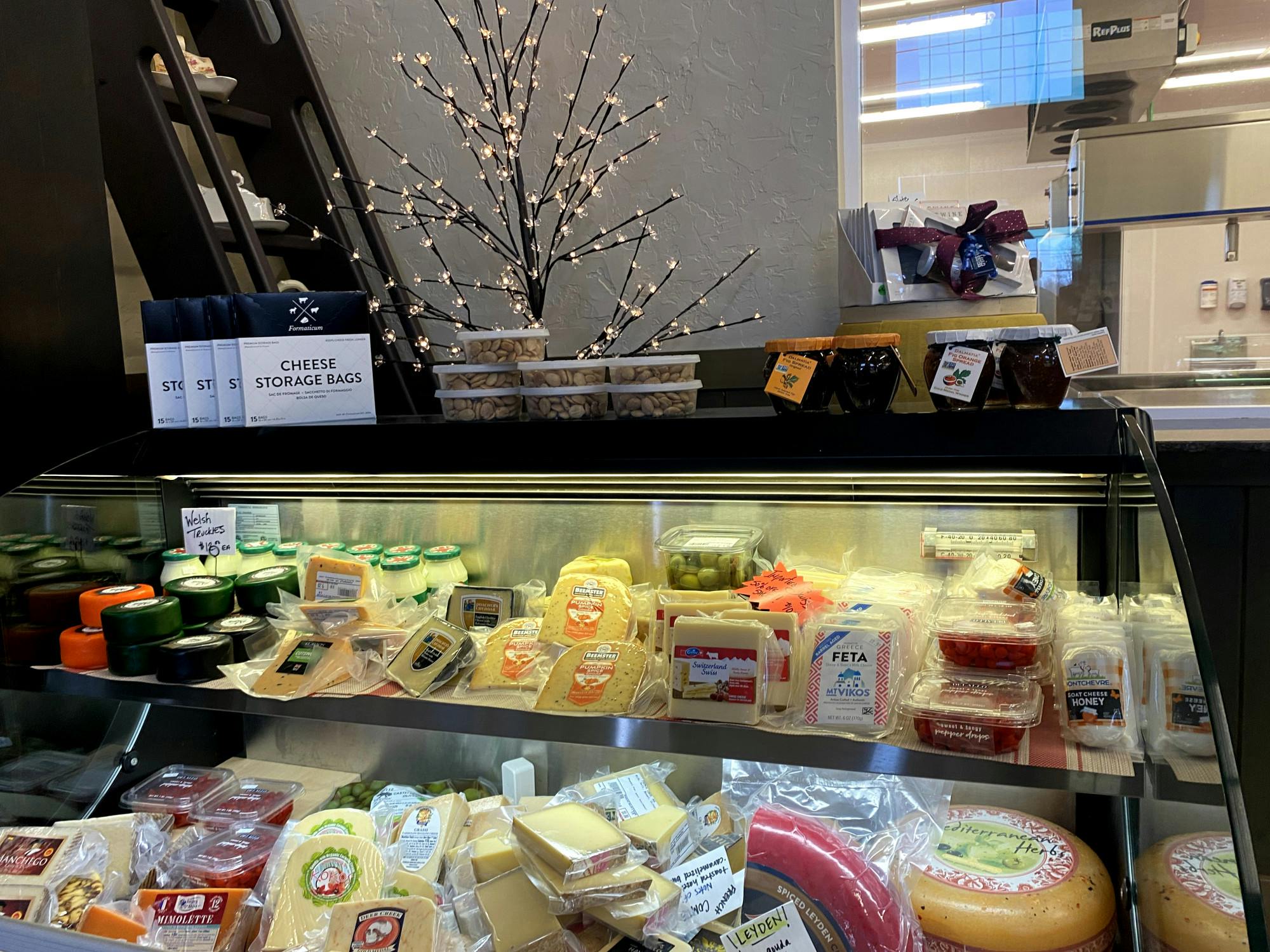
The import case at Twin Sisters Creamery, where a global collection of cheeses, spreads and charcuterie supplies are available for customers. The creamery is one business that makes up Whatcom County's robust food system. // Photo by Madisun Tobisch
Thinking of the future
"So, do you have a recipe for the dip?" asked a first-time customer who works down the road while looking at the Whatcom Blue cheese spread among the case filled with all local/regional products.
In a move reflective of the compassion she received from her fellow cheesemakers, Lindsay extends her wisdom to the man she just met but seems to already know.
"Oh, yeah, super simple. We tell people all about it all the time," she said.
This exchange is one sliver of Whatcom Couty's Food System in action.
Lindsay wonders what the outcome of a plan with such a large scope might look like, and what it could mean for the examples of community cooperation that already thrive in the space between the silos.
"It's a gift that this area has a food system like this," she said.
Jess Meyer, Sustainable Connections food and farming outreach coordinator, is part of a system already trying to help members of the food system connect.
"A lot of the work we do revolves around trying to boost the viability of small businesses, especially farms, and we particularly focus on restaurants that are supporting those local farmers," Meyer said.
She said taking an inclusive and broad approach can be beneficial for solving specific issues that impact multiple areas of a food system at once.
"Collaboration creates a lot more sustainability and awareness among community members, businesses, organizations that are trying to help businesses," Meyer said. "It provides a framework and language."
Sweeney encourages anyone with questions or comments about the plan to email the council before the vote. If the resolution is approved, Sweeney’s Food System Committee will continue its role by measuring the progress of the county and revising the plan as needed.
"There's lots and lots of indicators that we can look at to measure success, but I think at the end of the day, we will know if we have a strong farm community in Whatcom County or not," Sweeney said. "That will be abundantly clear in the next couple of years because either we will be in a crisis or we will be hanging on, and hopefully, by taking action on this food plan, we can hang on and build a brighter future."

Madisun Tobisch (she/her) is a third-year news/editorial major who has worked for The Front in some capacity since winter 2022. After all this time, her love of local news and celebrating the voices of her community keep her coming back for more. As returning managing editor this quarter, she hopes to further The Front's mission of keeping readers, both new and returning, informed and engaged. While not in the newsroom, Madisun can be found barista-ing, watching movies or trying to be creative.


